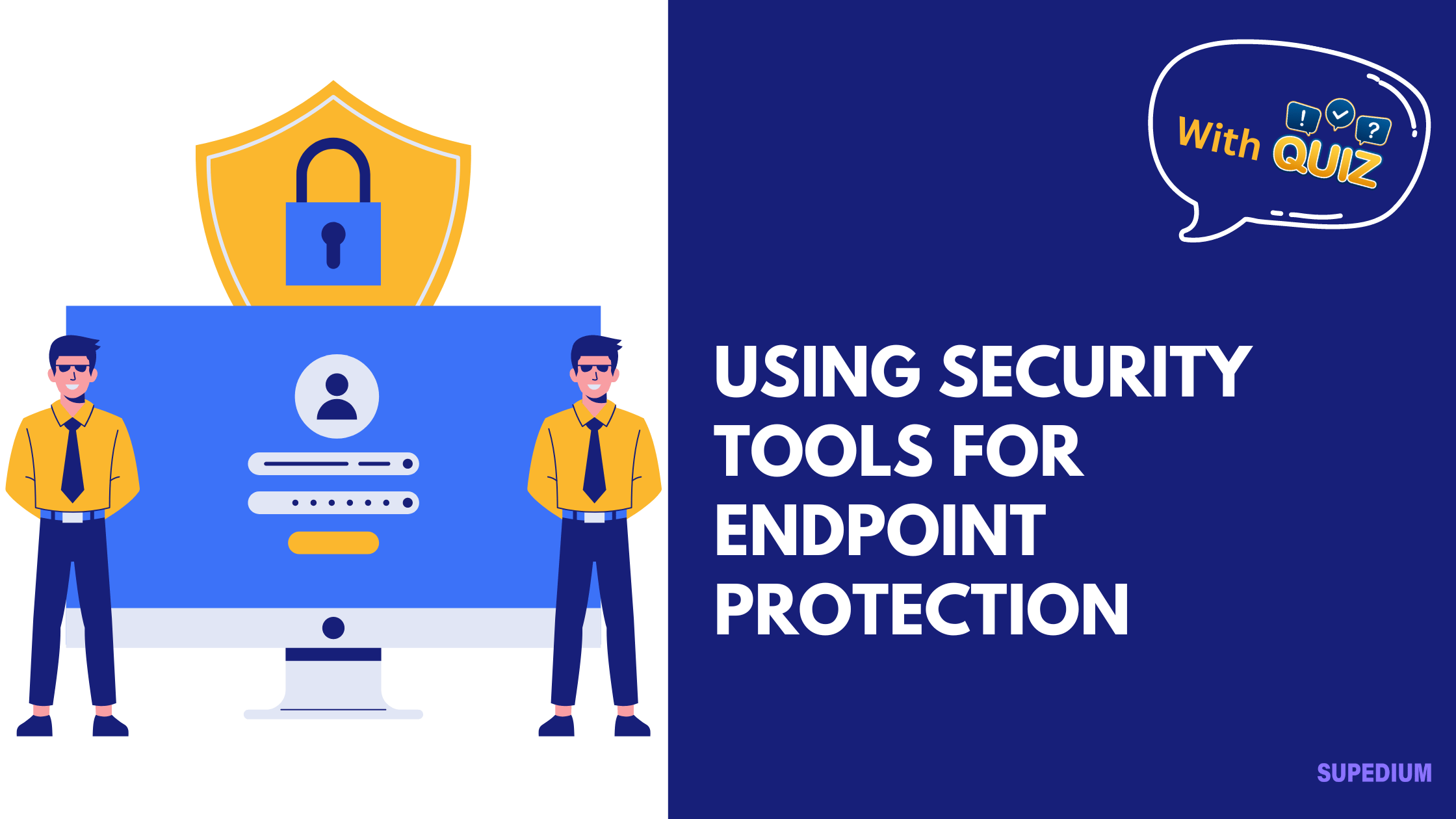Table of Contents
![]()
I. Introduction
Definition of Endpoint Protection
Endpoint protection refers to the strategies and tools designed to secure endpoints—devices such as desktops, laptops, mobile phones, and servers—that connect to corporate networks. As organizations increasingly rely on these devices to conduct business, the importance of robust endpoint security becomes paramount.
Overview of Security Tools
A variety of security tools are available to protect endpoints. These tools play a crucial role in a comprehensive cybersecurity strategy, helping organizations to mitigate risks and respond effectively to threats.
II. The Need for Endpoint Protection
Increasing Threat Landscape
The rise in cyber threats has made endpoint protection more critical than ever. Cybercriminals increasingly target endpoints with various forms of attacks, including malware, ransomware, and phishing. Recent statistics reveal that over 70% of organizations have experienced some form of endpoint compromise in the past year, underscoring the urgent need for effective protection.
Vulnerabilities in Endpoints
Endpoints are often the weakest link in an organization’s security posture. Common vulnerabilities include outdated software, unpatched operating systems, and weak user passwords. When these vulnerabilities are exploited, the impact can be severe, leading to data breaches and significant financial loss.
III. Types of Security Tools for Endpoint Protection
Antivirus and Anti-malware Software
Antivirus and anti-malware software are foundational tools in endpoint protection. They function by detecting and removing malicious software. Popular solutions like Norton, McAfee, and Bitdefender offer features such as real-time scanning and automatic updates, providing essential protection against a wide range of threats.
Endpoint Detection and Response (EDR)
Endpoint Detection and Response (EDR) tools are designed to provide real-time monitoring and analysis of endpoint activities. These tools help organizations quickly identify suspicious behavior and respond to incidents effectively. EDR solutions, such as CrowdStrike and Carbon Black, utilize advanced analytics to detect potential threats before they escalate.
Firewalls
Firewalls serve as a critical barrier between a trusted internal network and untrusted external networks. They can be hardware- or software-based and are essential for controlling incoming and outgoing network traffic. Configuring firewalls properly can prevent unauthorized access and help thwart potential attacks.
Intrusion Detection and Prevention Systems (IDPS)
Intrusion Detection Systems (IDS) monitor network traffic for suspicious activity, while Intrusion Prevention Systems (IPS) actively block such activities. Together, they provide a comprehensive security layer for endpoints, detecting and mitigating threats in real time. Organizations can choose from various IDS/IPS solutions based on their specific needs and network environments.
Mobile Device Management (MDM)
With the proliferation of mobile devices in the workplace, Mobile Device Management (MDM) has become crucial. MDM solutions enable organizations to manage and secure mobile endpoints, ensuring that devices comply with security policies. Key features often include remote wipe capabilities, device tracking, and application management.
Data Loss Prevention (DLP)
Data Loss Prevention (DLP) tools focus on preventing the unauthorized transfer of sensitive data. They monitor data at rest, in use, and in transit, ensuring that critical information is not exposed or mishandled. Implementing DLP can significantly reduce the risk of data breaches and ensure compliance with regulatory standards.
IV. Implementing Endpoint Protection Tools
Assessing Organizational Needs
Before implementing security tools, organizations must assess their unique security needs. Conducting a security audit helps identify critical assets, vulnerabilities, and areas requiring immediate attention. This assessment forms the basis for selecting the right tools.
Choosing the Right Tools
When selecting security tools, organizations should consider factors such as scalability, compatibility with existing systems, and cost. Evaluating vendor solutions based on features, customer support, and user feedback can also help in making informed decisions.
Integration and Deployment
Integrating multiple security tools can enhance overall protection but requires careful planning. Organizations should develop strategies for seamless integration and deployment, ensuring that tools work together effectively without creating gaps in security.
Ongoing Management and Updates
Regular updates and patch management are vital for maintaining endpoint security. Organizations must establish protocols for monitoring security tools and promptly applying updates to address emerging threats. Continuous monitoring and incident response strategies are essential for safeguarding endpoints.
V. Challenges in Endpoint Protection
User Behavior and Awareness
The human factor plays a significant role in cybersecurity. Users may inadvertently compromise security through negligent behavior, such as clicking on phishing links or using weak passwords. Implementing comprehensive training and awareness programs can help mitigate these risks.
Evolving Threats
Cybercriminals are continually adapting their tactics, making it essential for organizations to stay ahead of emerging threats. Regularly updating security measures and conducting threat assessments can help organizations remain vigilant and prepared.
Resource Constraints
Budget limitations often pose challenges for organizations seeking to enhance their endpoint protection. Balancing security investments with user productivity requires careful consideration of available resources and potential risks.
VI. Future Trends in Endpoint Protection
Advancements in AI and Machine Learning
Artificial intelligence (AI) and machine learning are transforming endpoint protection by enabling faster threat detection and response. AI-driven tools can analyze large volumes of data, identify anomalies, and automate responses to mitigate threats effectively.
Zero Trust Security Models
The Zero Trust security model operates on the principle of “never trust, always verify.” This approach emphasizes strict verification for every user and device, regardless of their location within or outside the network. Implementing Zero Trust for endpoint protection can significantly enhance security posture.
Increased Focus on Remote Work Security
The rise of remote work has introduced new security challenges for organizations. Ensuring that remote endpoints are secure requires tailored strategies, such as using VPNs, secure access protocols, and comprehensive endpoint protection tools.
VII. Conclusion
Recap of the Importance of Endpoint Protection
Endpoint protection is a critical component of any cybersecurity strategy. With the increasing prevalence of cyber threats targeting endpoints, organizations must prioritize the implementation of robust security tools.
Final Thoughts on Choosing and Using Security Tools
Selecting and effectively utilizing the right security tools is essential for safeguarding endpoints. Organizations should continuously assess their security posture, adapt to new threats, and invest in ongoing training and awareness.
Call to Action for Organizations to Enhance Endpoint Security
Organizations must take proactive measures to enhance their endpoint security. By implementing the appropriate tools and fostering a culture of cybersecurity awareness, they can better protect their critical assets and data from evolving threats.






Be the first to comment